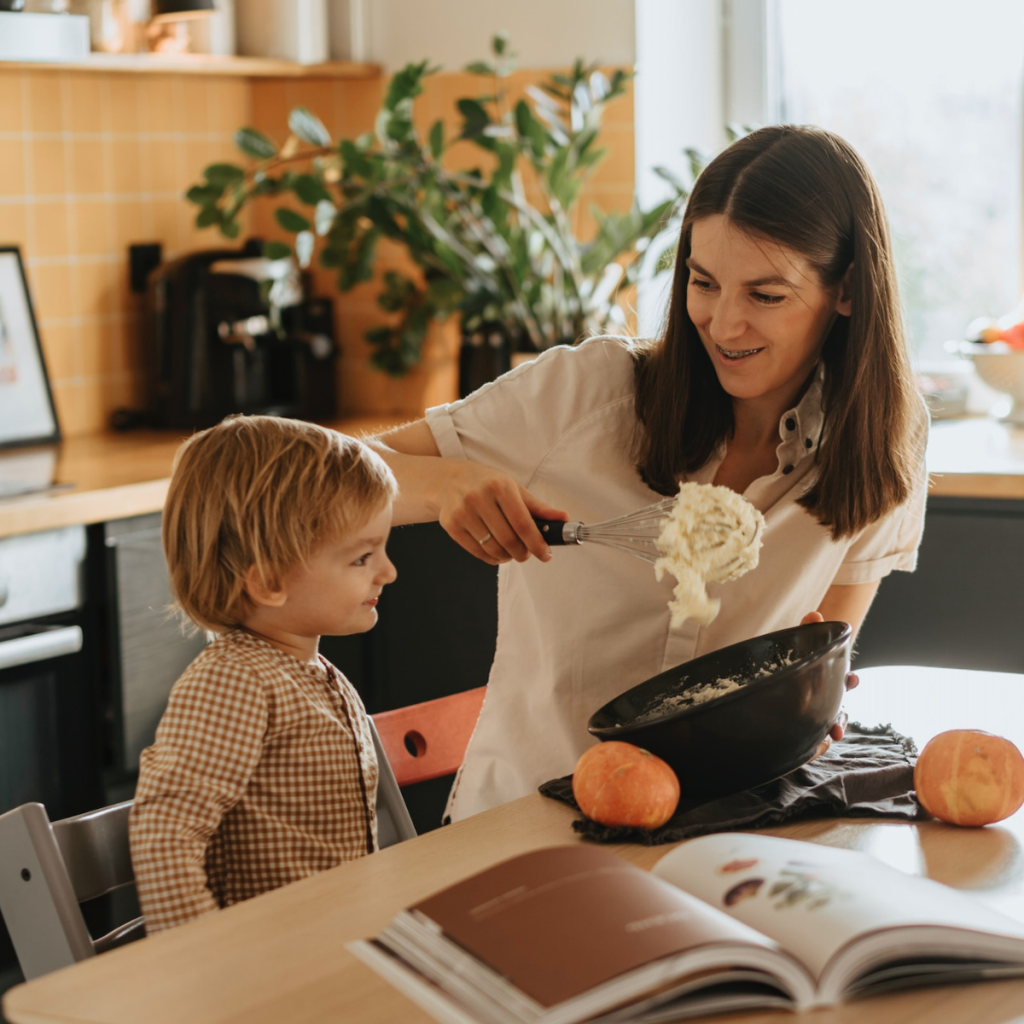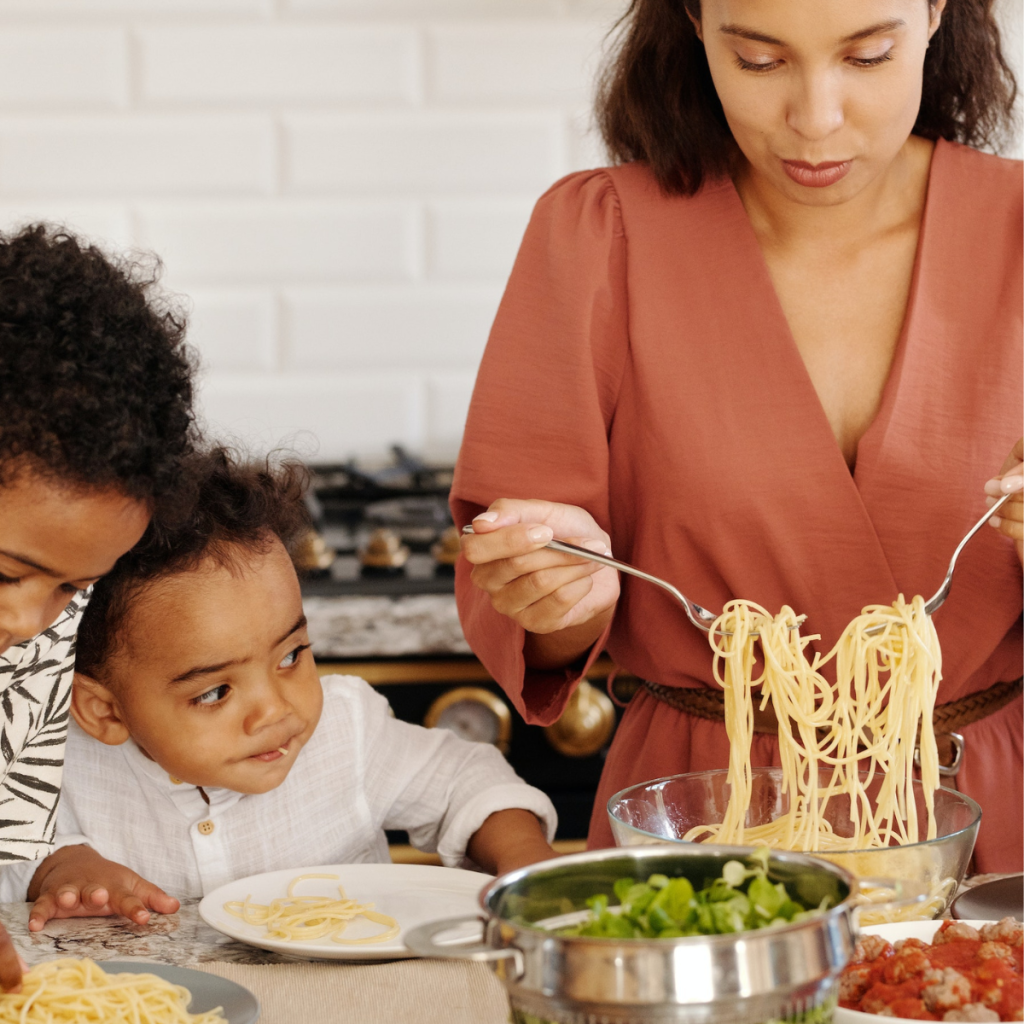Discover how to effectively teach cooking skills to young children aged 3-4 with this comprehensive step-by-step guide.
Teaching Cooking to 3-4 Year Old Children: A Step-by-Step Guide
Cooking is not just a hobby for adults. It can also be a fun and educational activity for young children. By introducing your little ones to the world of cooking at an early age, you can help them develop important skills and create lasting memories. In this step-by-step guide, we will explore the various aspects of teaching cooking to 3-4 year old children. So roll up your sleeves, gather your ingredients, and let’s get started!
Understanding the Importance of Teaching Cooking to Young Children

Teaching cooking to young children goes beyond just nurturing their culinary skills. It offers a host of benefits that contribute to their overall development and well-being.
When children are introduced to cooking at a young age, they not only learn how to prepare delicious meals but also develop essential life skills. Cooking helps children develop their motor skills, hand-eye coordination, and dexterity. As they measure ingredients, mix, and stir, they enhance their fine motor skills and gain a better understanding of cause and effect. The simple act of cracking an egg or pouring flour into a bowl requires precision and control, which can greatly improve their hand-eye coordination.
Moreover, cooking also teaches kids about patience, following instructions, and working together as a team. In the kitchen, children learn the importance of waiting for the dough to rise or the cake to bake. They understand that good things take time and that patience is a virtue. Following recipes and instructions also helps them develop their reading and comprehension skills. They learn to pay attention to details and follow step-by-step directions, which are valuable skills that can be applied in various aspects of their lives.
Working together as a team in the kitchen fosters a sense of cooperation and collaboration. Children learn to communicate effectively, delegate tasks, and support each other. They understand the importance of sharing responsibilities and working towards a common goal. These teamwork skills are transferable to other areas of their lives, such as school projects or extracurricular activities.
Benefits of Cooking Skills for Toddlers
Cooking with toddlers not only enhances their motor skills and teaches them important life skills but also has numerous other benefits. One of the significant advantages is the development of their sensory skills. When children engage in cooking activities, they get to touch, smell, and taste different ingredients. They learn to differentiate between various textures, flavors, and aromas, which helps in expanding their sensory experiences.
Furthermore, cooking with toddlers can be an excellent opportunity to introduce them to new foods and expand their palate. By involving them in the cooking process, they become more willing to try new dishes and ingredients. This can be particularly beneficial for picky eaters, as they are more likely to taste and enjoy a meal that they have helped prepare.
Safety Considerations for Young Chefs
Safety should always be the top priority when cooking with young children. It is crucial to create a safe environment and teach them about proper kitchen safety practices. Supervision is key, and adults should always be present to guide and assist children during cooking activities.
One essential safety rule to teach young chefs is proper handwashing. Before and after handling food, children should be encouraged to wash their hands thoroughly with soap and warm water. This helps prevent the spread of germs and ensures food safety.
When cooking with young children, it is advisable to use kid-friendly tools and equipment whenever possible. Plastic knives with rounded edges and mixing bowls with non-slip bases can minimize the risk of accidents and injuries. It is also important to teach children how to handle kitchen tools safely and to respect the potential dangers they may pose.
By prioritizing safety and teaching children about kitchen safety practices, cooking can be a fun and educational experience for young chefs. They can develop their culinary skills while also learning important lessons about responsibility and staying safe in the kitchen.
Preparing Your Kitchen for Little Cooks
To make cooking enjoyable and safe for your little ones, it’s important to prepare your kitchen appropriately.
Cooking with children can be a wonderful bonding experience and a great way to introduce them to the joys of food and creativity. However, it’s crucial to create a safe and child-friendly environment in your kitchen to ensure their well-being. Here are some additional tips to help you make your kitchen a haven for little cooks:

Choosing the Right Tools and Equipment
Investing in child-size utensils is not only practical but also adds an element of excitement to your child’s cooking adventures. Small measuring cups and spoons, mini whisks, and colorful aprons will make them feel like professional chefs in their own right. These tools are designed to be easy to handle and are perfect for little hands.
Furthermore, consider getting child-friendly knives that are specifically designed for kids. These knives have blunt edges, ensuring that your child can safely participate in chopping and slicing under your supervision.
When it comes to choosing pots and pans, opt for lightweight and non-stick options. This will make it easier for your child to handle them without the risk of accidents or burns.
Creating a Safe and Child-Friendly Environment
Clearing your kitchen countertops of any potentially dangerous objects is essential to prevent accidents. Make sure to keep sharp knives, fragile glassware, and other hazardous items out of your child’s reach. Store them in locked cabinets or high shelves to ensure their safety.
Organize your ingredients and tools in a way that is easily accessible to your child. Consider using low shelves or designated drawers for their cooking supplies. This will empower them to take charge of their cooking projects and encourage independence.
Having a step stool near the cooking area can be incredibly helpful for your child. It will enable them to reach the counter comfortably and participate in various cooking tasks, such as mixing ingredients or observing the cooking process. Ensure that the step stool is sturdy and secure to prevent any accidents.
Additionally, take precautions to prevent slips and falls. Place non-slip mats or grips under cutting boards and mixing bowls to provide stability during food preparation. This simple measure can significantly reduce the risk of accidents and injuries.
Remember, creating a safe and child-friendly environment in your kitchen is not only about physical aspects but also about fostering a positive and encouraging atmosphere. Encourage your child’s curiosity, creativity, and love for food. Embrace the mess and the learning process, and most importantly, have fun together!
Introducing Basic Cooking Concepts to 3-4 Year Olds
Now that your kitchen is ready, it’s time to introduce some basic cooking concepts to your little aspiring chefs.
Cooking with young children is not only a fun and engaging activity, but it also helps them develop important life skills such as following instructions, problem-solving, and creativity. By involving them in the cooking process, you are fostering their independence and building their confidence.
Understanding Ingredients and Their Uses
Take the time to explain different ingredients to your child, such as fruits, vegetables, grains, and dairy products. Show them how these ingredients can be used to create delicious and healthy meals. Encourage their curiosity and involve them in simple tasks like washing fruits or tearing lettuce.
For example, when introducing fruits, you can explain the different colors, textures, and flavors. Show them how fruits can be enjoyed on their own or incorporated into recipes like smoothies or fruit salads. This not only teaches them about the importance of a balanced diet but also sparks their interest in trying new foods.
When it comes to vegetables, you can discuss the various types and their benefits. Engage your child by asking them to name their favorite vegetables and why they like them. You can then involve them in washing and cutting vegetables, making it a sensory experience that enhances their fine motor skills.
Exploring Simple Cooking Techniques
Start with simple cooking techniques like mixing, stirring, and scooping. These activities will help develop their hand-eye coordination while fostering a sense of independence. Let them experience the joy of creating something from scratch and praise their efforts throughout the process.
When it comes to mixing, you can show your child how to combine ingredients to create a batter for pancakes or muffins. Let them take turns stirring the mixture and watch as their faces light up with excitement when they see the transformation from separate ingredients to a cohesive batter.
Another simple technique to explore is scooping. Teach your child how to use an ice cream scoop to portion out cookie dough onto a baking sheet. This not only helps them practice their fine motor skills but also introduces them to the concept of portion control.
As your child gains confidence in these basic techniques, you can gradually introduce more complex skills such as measuring ingredients, using kitchen tools like a blender or food processor, and even basic knife skills under close supervision.
Remember, the goal is not to create perfect dishes but to create a positive and enjoyable experience for your child. Embrace the mess and let them take the lead in their culinary adventures. With your guidance and support, you are laying the foundation for a lifelong love of cooking and healthy eating.
Planning Your First Cooking Lesson
Now that your child has a basic understanding of cooking, it’s time to plan your first cooking lesson together!
Selecting Age-Appropriate Recipes
Choose recipes that are suitable for their age and skill level. Look for recipes that involve minimal steps and require basic ingredients. Recipes for homemade fruit salads, sandwiches, or simple pasta dishes are great choices to begin with.
Structuring the Lesson for Maximum Engagement
Keep the cooking lesson short and engaging. Break the tasks into smaller steps and involve your child in each stage. This way, they will stay focused and excited throughout the entire process. Don’t forget to make time for tasting and celebrating their culinary masterpieces!
Making Cooking Fun and Educational
Cooking doesn’t have to be a serious affair. By infusing fun and educational elements into the cooking experience, you can keep your child’s interest piqued and foster their love for cooking.
Incorporating Games and Fun Activities into Cooking
Turn cooking into a game by challenging your child to find ingredients or teaching them to identify colors and shapes while cooking. You can also encourage them to come up with creative names for their dishes or create their own recipes. Remember, the key is to keep the atmosphere light-hearted and enjoyable.
Using Cooking to Teach Basic Math and Science Concepts
Take advantage of cooking to teach your child basic math and science concepts. From counting ingredients to measuring and observing changes during cooking, these activities provide valuable learning opportunities. Show them how science is involved in the cooking process, such as how heat transforms ingredients, and watch their curiosity bloom!
Teaching cooking to 3-4 year old children is an enriching experience for both you and your little ones. By following this step-by-step guide, you can create a safe and enjoyable environment that nurtures their culinary skills, creativity, and love for food. So put on your chef hats, embrace the mess, and embark on this exciting cooking journey with your little chefs!



